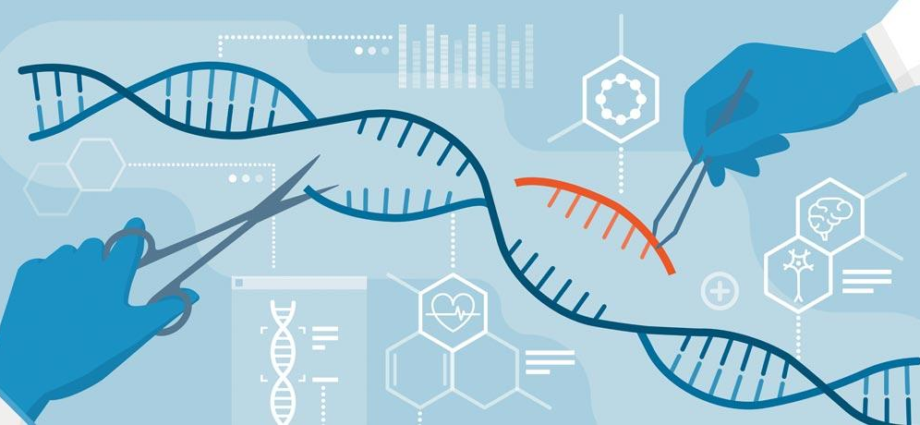
ABSTRACT:
In this article, we will discuss about the CRISPR method of molecular biology and forensic sciences. CRISPR-Cas9 (Clustered Regularly Interspaced Short Palindromic Repeats and CRISPR-associated protein 9) is a game-changing genetic engineering tool. It provides a precise and fast method for editing the genomes of many creatures, including humans. Understanding the principles and mechanisms behind CRISPR is critical for comprehending its potential and ramifications. We will also provide references to learn and acknowledge the concepts of CRISPR.
INTRODUCTION OF CRISPR METHOD:
CRISPR (Clustered Regularly Interspaced Short Palindromic Repeats) is a natural bacterial defense system against viruses. It enables bacteria to store bits of viral DNA within their genome, which may subsequently utilized as a template to detect and eliminate similar viruses in the future. Cas9, a CRISPR-associated enzyme, functions as molecular scissors, cutting DNA at specific sites determined by a guide RNA molecule.
PRINCIPLE OF CRISPR:
CRISPR-Cas9 is based on a natural defensive system found in bacteria and archaea against viruses and plasmids. This system comprised of two basic components. CRISPR array: This array consists of short, repetitive DNA sequences separated by unique spacer sequences obtained from previous contacts with foreign genetic components. Cas proteins: These proteins, notably Cas9, are important for detecting and cleaving foreign DNA that matches the spacer sequences in the CRISPR array.
MECHANISM OF CRISPR METHOD:
The mechanism of CRISPR-Cas9 separated into several critical steps. Recognition occurs when the Cas9 protein, led by a single-guide RNA (sgRNA), attaches to a complementary DNA sequence. Binding: Cas9 unwinds the DNA duplex and forms a complex with the target DNA, positioning itself near a protospacer adjacent motif (PAM) sequence that is required for Cas9 binding. Cutting: After binding to the target DNA, Cas9 causes a double-stranded break (DSB) at the target location. Repair: The cell’s DNA repair mechanism subsequently fixes the DSB using one of two pathways. Non-homologous end joining (NHEJ): This mechanism frequently produces tiny insertions or deletions (indels) at the location of the break, resulting in gene knockout. Homology-directed repair (HDR): This mechanism may be used to create precise genetic alterations by supplying a DNA template with the required sequence changes.

APPLICATIONS OF CRISPR:
1. APPLICATIONS CRISPR METHOD IN MEDICINE:
One of CRISPR’s most potential uses is the therapy of genetic disorders. CRISPR has the potential to give targeted medications and possibly cures by identifying and repairing particular genetic abnormalities that cause illnesses. Such as cystic fibrosis, sickle cell anemia, and Huntington’s disease. In 2020, researchers utilized CRISPR to effectively treat a sickle cell disease patient, marking a significant milestone in gene editing research. Clinical trials also conducted to determine its effectiveness in treating a variety of additional genetic illnesses.
2. ETHICAL CONSIDERATIONS:
While CRISPR has enormous promise, it also presents ethical issues. The capacity to modify the human germline, resulting in heritable changes handed down through future generations. It raises ethical concerns about safety, consent, and the possibility of unforeseen effects. International rules and laws created to address these ethical problems and assure the proper use of CRISPR technology. Transparency, public participation, and continual communication between scientists, ethicists, legislators, and the general public required to manage the ethical challenges of gene editing.
3. APPLICATIONS OF CRISPR IN AGRICULTUTRE:
Beyond human health, CRISPR has important implications for agriculture. Crop DNA may be carefully modified to improve features like as production, nutritional content, and pest and disease resistance. This has the potential to solve global food security issues, reduce the need for chemical pesticides, and boost agricultural resilience in the face of climate change.

FUTURE DIRECTIONS:
As CRISPR technology advances, researchers investigate new uses and improve old approaches. CRISPR-based diagnostics enable the quick and reliable identification of pathogens, with potential applications in disease surveillance and customized therapy. Furthermore, CRISPR systems other than Cas9, such as base and prime editors, are being developed to allow for more accurate and flexible editing of the genetic code. These developments promise to broaden the spectrum of CRISPR applications and speed research in a variety of sectors.
CONCLUSION-CRISPR METHOD:
CRISPR-Cas9 is a transformational technology with far-reaching implications for medicine, agriculture, and other fields. While ethical concerns and technological obstacles persist, CRISPR’s potential advantages are apparent. As we use CRISPR to alter the future of biology and society, we must continue to do research, innovate responsibly, and weigh the ethical consequences carefully.
REFERENCES:
Doudna, J. A., & Charpentier, E. (2014). The new frontier of genome engineering with CRISPR-Cas9. Science, 346(6213), 1258096. https://pubmed.ncbi.nlm.nih.gov/25430774/
Jinek, M., Chylinski, K., Fonfara, I., Hauer, M., Doudna, J. A., & Charpentier, E. (2012). A programmable dual-RNA-guided DNA endonuclease in adaptive bacterial immunity. Science, 337(6096), 816-821. https://pubmed.ncbi.nlm.nih.gov/22745249/
Cyranoski, D. (2020). CRISPR gene editing put to the test in landmark human trial. Nature, 579(7799), 185-186. https://pubmed.ncbi.nlm.nih.gov/27882996/
Khush, G. S. (2013). Strategies for increasing the yield potential of cereals: case of rice as an example. Plant breeding: past, present and future, 157-172. https://www.scirp.org/reference/referencespapers?referenceid=2896993
Kanchiswamy, C. N., Sargent, D. J., Velasco, R., & Maffei, M. E. (2015). Malnoy M. Looking forward to genetically edited fruit crops. Trends Biotechnol, 33(2), 62-64. https://pubmed.ncbi.nlm.nih.gov/25129425/




